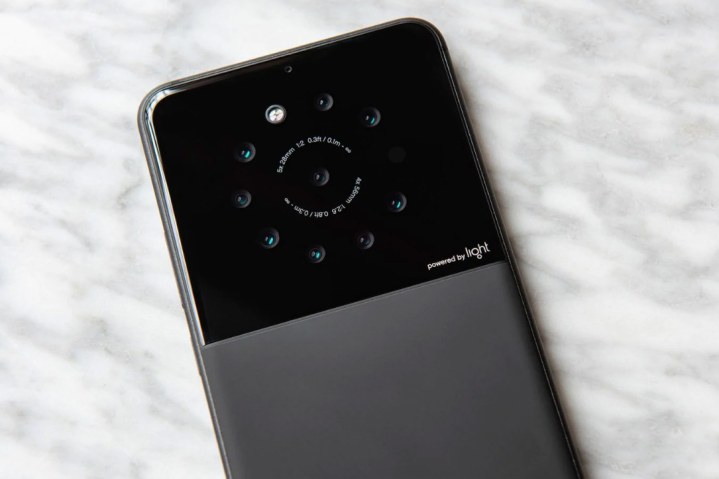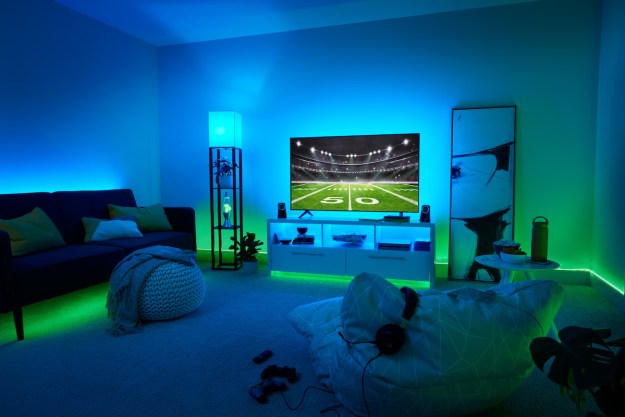
Light, maker of a wacky-looking 16-lens camera that hit the market last year, has plans to incorporate its technology into a smartphone.
Dual-lens phones are becoming increasingly commonplace, but Light intends to take on the competition with a smartphone featuring a seemingly absurd nine lenses.
Silicon Valley-based Light recently showed the Washington Post a bunch of concept and working prototype handsets with between five and nine lenses built into the back. It hopes to unveil the device by the end of this year.
The company claims its smartphone camera will offer excellent low-light performance and various depth effects while shooting images of up to a whopping 64 megapixels. That’ll surely seem like overkill for most casual
There’s no word on whether Light is collaborating with an existing smartphone maker to build the phone, or whether it’s going it alone. We’ve reached out to the company for clarification and will update when we hear back.
Challenges
Design challenges include slimming down the technology, as Light’s stand-alone camera, at almost an inch thick, is something of a brick in smartphone terms.
It’ll also need to find an attractive price point for the device. The stand-alone, which offers similar specs without all the phone functionality, already costs a wallet-flinching $1,950.
Light’s unique camera technology uses multiple lenses of varying focal lengths to capture multiple images at the same time and then uses algorithms to fuse them together to create a single picture.
Its L16 camera also lets you adjust the focal plane and depth of field after the image has been snapped.
Light says its 52-megapixel camera offers DSLR-quality images, but reviews of the L16 at the end of last year cast doubt on its claims of excellent low-light performance. With development work continuing, however, the company last month issued a software update that it said improved the camera’s image quality by at least one full stop “in most low-light scenarios.” Light described the update as a “huge” step forward, “specifically around fine details and noise reduction.”
With a growing number of smartphones featuring some pretty nifty camera technology with two or three lenses, Light will have to offer a truly top-notch camera — as well as a compelling smartphone design — to have any hope of succeeding in an already crowded market.
The company has support though, receiving a $30 million cash injection from GV (formerly Google Ventures) in 2016, as well as investment from manufacturing giant Foxconn.
Editors' Recommendations
- This is one of the toughest smartphone camera comparisons I’ve ever done
- The future of blood oxygen monitoring lies with your phone’s camera
- Apple is dreaming up ways to put a camera on the Apple Watch
- World’s smallest .56-micron pixel heralds the end of camera bumps
- Omnivision’s 200-megapixel smartphone camera will arrive on phones in 2022


